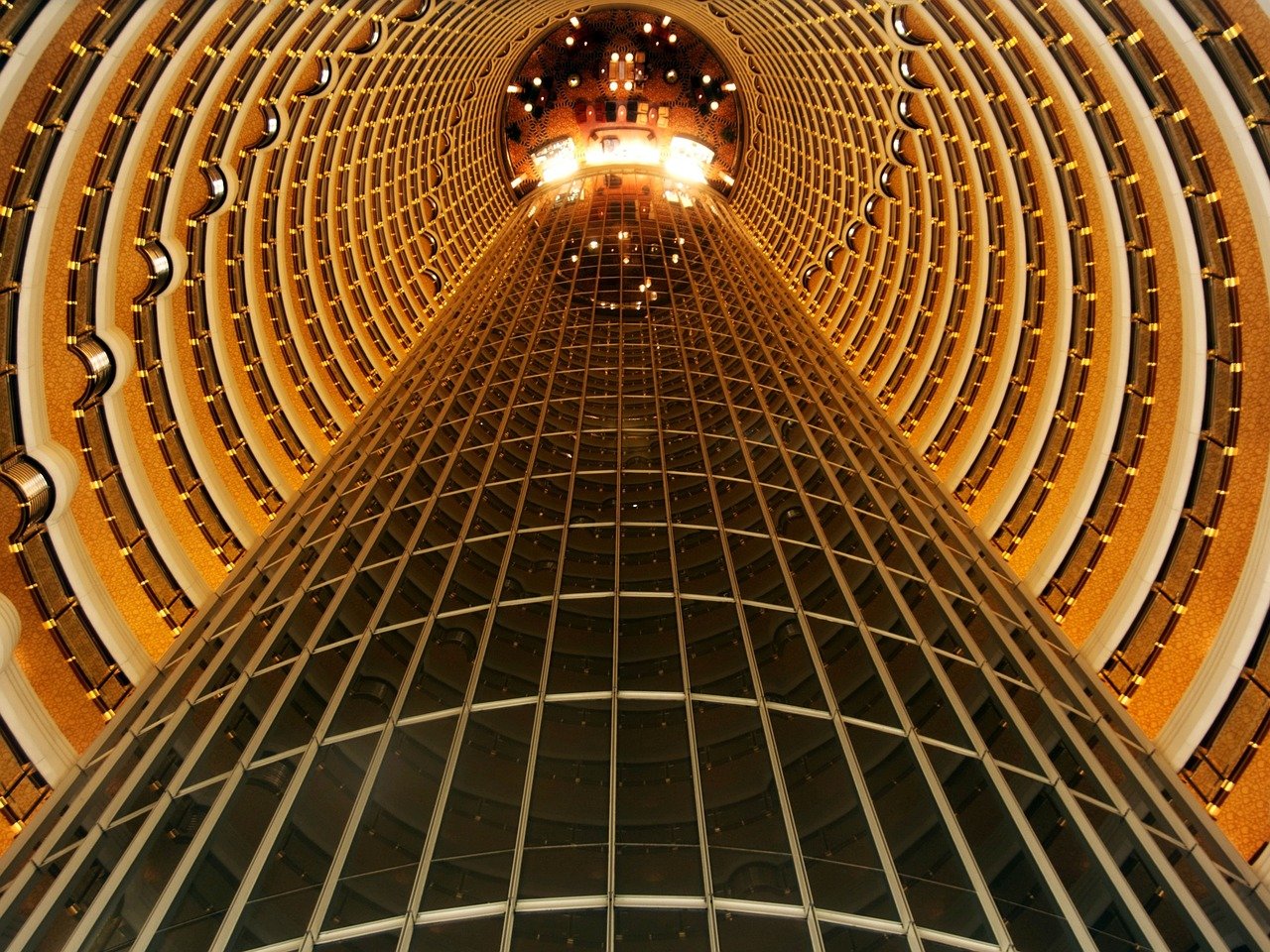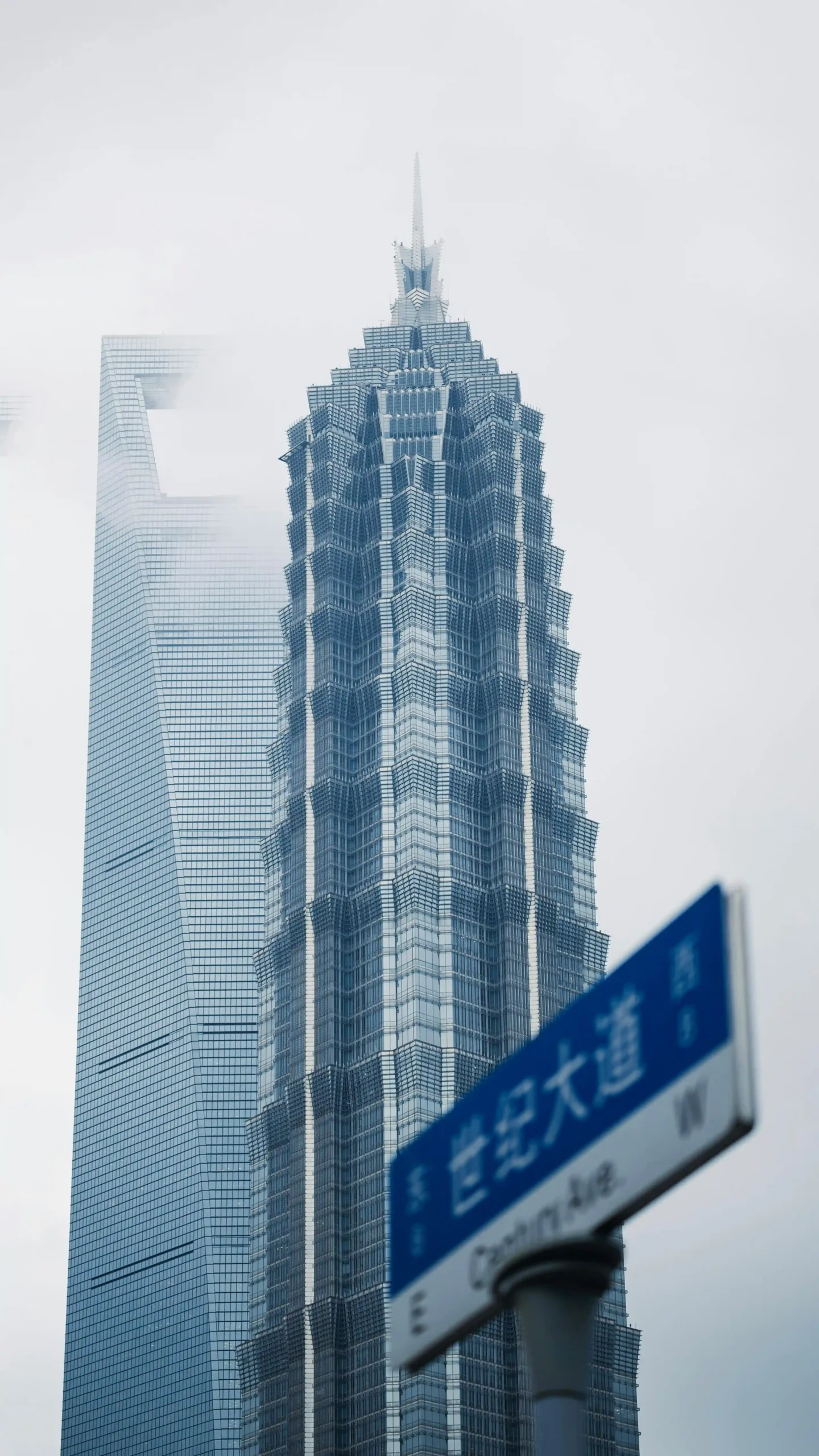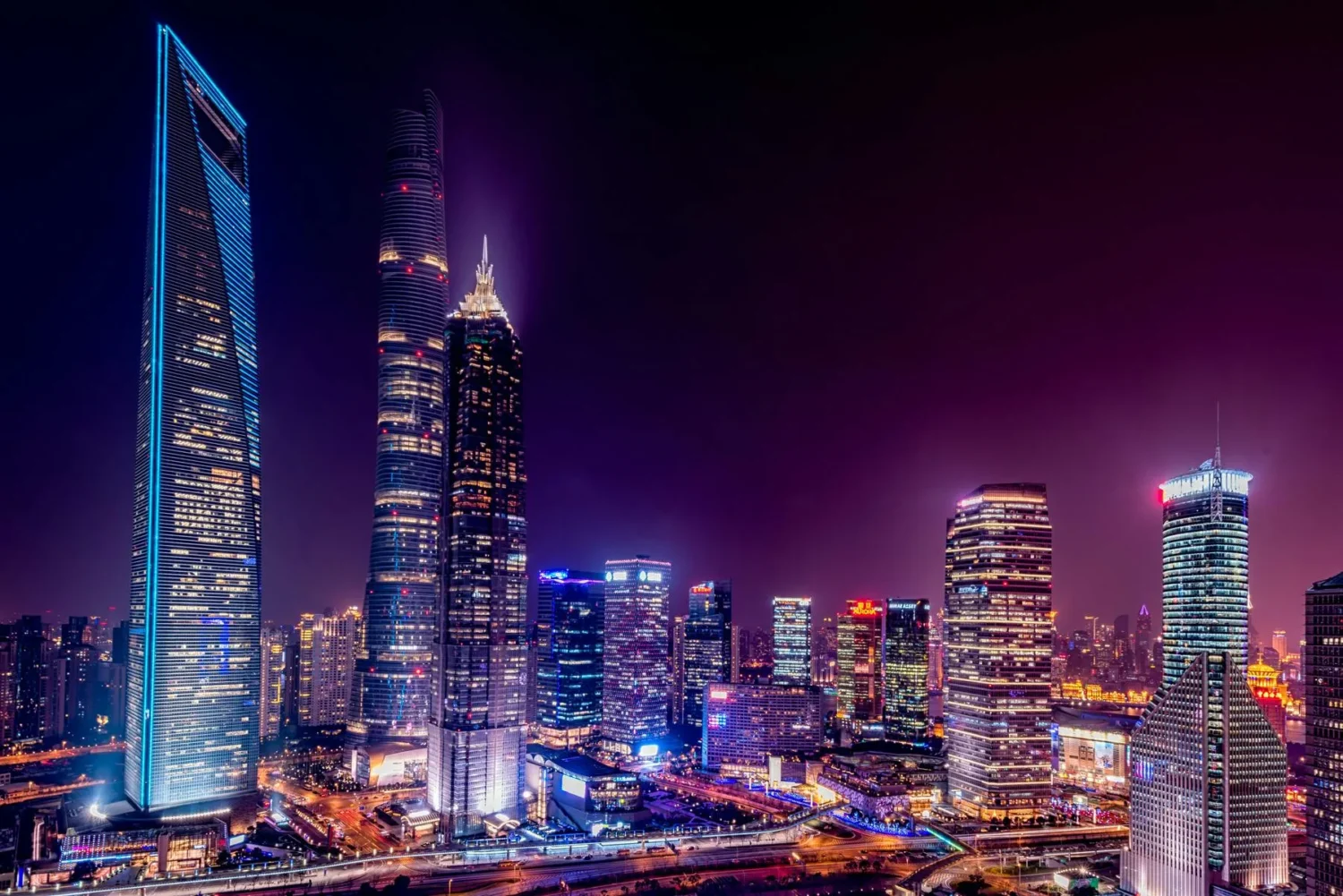Rising to 420.5 m (1,380 ft) in the heart of Lujiazui, Shanghai’s financial district, the Jin Mao Tower (金茂大厦, “Golden Prosperity Building”) was a record-setting marvel when completed in 1999. With its unique tiered form and bold structural expression, it became a symbol of modern China’s rapid rise. At the time, it was the tallest building in China and Asia, and the fourth tallest in the world—a vertical icon blending Chinese tradition with futuristic ambition.
A 1990s Skyscraper Milestone
Soaring 88 floors above ground with three additional basement levels, the Jin Mao Tower reaches an architectural height of 420.5 m (1,380 ft).
Upon its completion in 1999, it was the tallest building in China and Asia, and the fourth tallest globally, behind the Petronas Towers (451.9 m, Kuala Lumpur), Willis (then Sears) Tower (442.1 m, Chicago), and ahead of the World Trade Center towers (417.7 m and 415.1 m, New York).
Its iconic tapering profile marked a critical step in the evolution of Shanghai’s skyline, paving the way for the Shanghai World Financial Center (2008) and Shanghai Tower (2015).
East Meets West in Architectural Form
Designed by Skidmore, Owings & Merrill (SOM), the tower fuses traditional Chinese architectural language with sleek modernism.
The stepped, pagoda-inspired silhouette features 16 segments, with the 88 floors divided into a 16-story base and 11 progressively smaller tiers, each flaring outward slightly like a pagoda roof, symbolizing strength and unity. The number 8, considered auspicious in Chinese culture, is woven throughout the design, including its 88 floors and octagonal core.
Clad in a glass and stainless steel curtain wall with a lattice of metal pipes, it reflects light dynamically, creating a shimmering presence above Pudong.
Mixed-Use Skyscraper with Iconic Hospitality
Jin Mao combines premium office space (floors 3–50) with the Grand Hyatt Shanghai (floors 53–87), one of China’s most iconic hotels.
At its opening, the Grand Hyatt, with 555 rooms, featured the highest hotel lobby in the world on floor 54, offering unmatched views of the Huangpu River and The Bund.
The hotel includes eight restaurants and bars, such as Cloud Nine (stylized as “Cloud 9”) sky bar, and a striking 33-story central atrium (floors 56–87)—one of the tallest atriums ever built, lined with 28 annular corridors and staircases in a spiral.


Engineered to Withstand Typhoons and Earthquakes
The structure rests on a 4 m-thick concrete raft foundation supported by 1,062 steel piles driven approximately 83 m into Pudong’s soft alluvial soil for stability.
Its composite steel-and-concrete frame, with an octagonal concrete core and 16 exterior columns (eight steel, eight steel-and-concrete), is connected by radiating beams to withstand typhoon-level winds and seismic forces up to magnitude 7, as tested by extensive wind tunnel analysis.
Advanced engineering ensured it was one of the safest supertalls of its era.
A Public Observation Deck with Record Views
The 88th-floor Skywalk Observatory, at 340.6 m, was China’s highest publicly accessible floor in 1999, offering panoramic views of Shanghai’s skyline, including the Oriental Pearl Tower, and later the SWFC and Shanghai Tower.
In 2016, the Jin Mao Tower Skywalk was introduced: a tethered, outdoor walk on a 60 m-long, 1.2 m-wide glass platform, 340.6 m above the city, providing a thrilling experience without handrails.
Two high-speed elevators, traveling at 9.1 m/s, reach the 88th floor in 45 seconds from the basement.
A Pivotal Landmark in Shanghai’s Vertical Evolution
Jin Mao marked the transformation of Lujiazui from farmland to one of the world’s most recognizable financial districts.
As the first of the “Shanghai Super Tall Trio” (with SWFC and Shanghai Tower), it set the stage for record-breaking structures that followed.
Its legacy lies in its integration of elegance, cultural symbolism, and engineering prowess, unmatched by many towers of its time.
Still Standing Tall After 25 Years
Though surpassed in height by its neighbors, Jin Mao Tower remains a cornerstone of Shanghai’s architectural identity.
Its Art Deco-inspired verticality, rooted in tradition yet driven by ambition, continues to inspire architects and urbanists globally.
After more than two decades, it stands as a monument to a pivotal moment in China’s modern history—when Shanghai emerged as a global city.
Global Ranking as of July 2025
As of July 2025, the Jin Mao Tower ranks 38th in the world by architectural height, according to Wikipedia’s current list of tallest buildings. According to the Council on Tall Buildings and Urban Habitat (CTBUH), however, it ranks slightly higher at 34th place.
This variance is due to slight differences in data reporting, update frequency, and the treatment of certain buildings or structures across databases.

